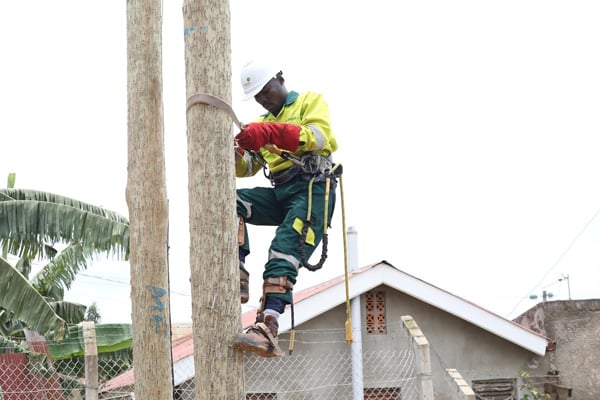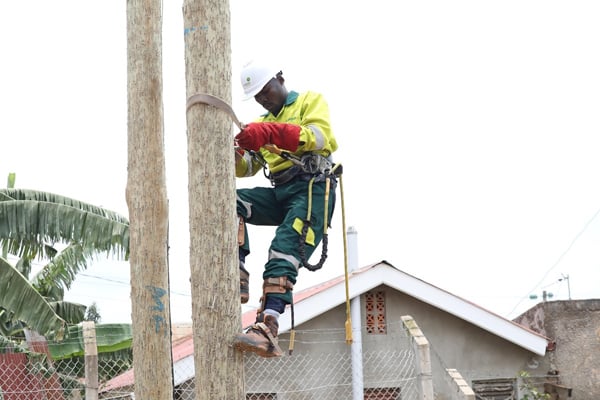Prime
When did things change for Umeme?

Although there has been no formal communication, government officials indicate Umeme will exit after 2025. Photo / File
What you need to know:
- Government has already told Eskom to windup its operations ahead of expiry of its concession next year, which could be an indication that it intends to take back operations of the electricity sector.
By around 2018, if anyone had suggested that Umeme would sweat over a concession renewal, it would be difficult to believe.
Yes, Uganda’s largest power distributor seemed to be in control and on course of bagging a renewed concession.
The concession talk had come quite early, but it was necessary to calm market jitters and allow investors to inject long term capital.
In a November 2018 letter, President Museveni, in a bid to calm investors, directed the then Energy Minister Irene Muloni to commence concession negotiations with a bias of an extension.
“I have received information that the delay in starting negotiations on the Umeme concession is affecting the market,” he wrote.
Subsequently, a committee composed of bureaucrats from Energy and Finance ministries, Attorney General, Uganda Electricity Distribution Company, Uganda Electricity Transmission Company and Electricity Regulatory Authority (ERA) was put together, only to go silent slightly over a year.
People familiar with the matter then told Monitor that whereas government had offered 10 percent for return on investment, Umeme had proposed 13 percent, down from 20 percent
Nothing was heard in over two years until in January when government officials started speaking in tongues.
Return on investment, tariffs and energy losses had been key discussion points and it had been hoped that there would be a convergence point on all.
A Ministry of Energy official yesterday, told Monitor that the negotiations were suspended in 2020 to let the concession continue into its full term. Government is now conducting an audit to verify a number of things.
“There are studies going on to verify investments to inform government at the expiry of the concession if there’s money that government has to pay Umeme. It’s not only Umeme, but also Eskom,” the official, who requested anonymity, said.
Government has already told Eskom to windup its operations ahead of expiry of its concession next year.
It is difficult to understand why Umeme’s concession negotiations were cancelled.
However, the hushed tones in government corridors have suddenly grown louder and must be uncomfortable for both Umeme and investors.
People close to the matter maintain that Cabinet has resolved not to renew the concession. However, there has been no official position from government.
Many government officials, who spoke to Daily Monitor on condition of anonymity, confirmed earlier pronouncements by officials in the Energy Ministry, including the latest from State Energy Minister Okaasai Opolot, who recently said Umeme would exit after 2025.
However, amid all this, Umeme remains confident. In a November 9 notice to shareholders, Umeme said it was committed to performing its obligations as per the existing concession, urging investors to remain calm.
“The Company [Umeme] shall ... promptly issue a notice once written communication is received ... on the future of the concession,” the notice, which was prompted by Mr Okaasai’s statements, said.
Of course, Mr Okaasai’s statement was not the first. In January, Energy Ministry tabled a Shs256.2b request, which they said was part of a phased buyout for the termination of Umeme’s contract.
However, the proposal was thrown out by the Parliamentary Committee on Natural Resources for lack of clarity on the buyout plan.
This had come after President Museveni had severally complained about tariffs, which he blamed on “middlemen” .
“Electricity is not just for lighting. It’s first and foremost for production of goods, which are competitive. We cannot undermine ourselves by promoting expensive energy that will undermine our industrialisation,” he said during the Oil and Gas Conference in October.
Mr Museveni had complained about the same during celebrations to mark Labour Day in May 2021, just two years into the concession negotiations.
Similarly, in November 2011, Gen Caleb Akandwanaho aka Salim Saleh, had suggested, during an Ad hoc Parliamentary Committee, that government should re-nationalise Umeme, noting that unbundling Uganda Electricity Board, which resulted in the formation of Umeme and other successor power entities, was “not well thought-out”.
Of course, this had come after a 2009 report, in which, Gen Saleh blamed the high power tariffs on Umeme.
Some analysts have suggested that the recent pronouncements might be picking President Museveni’s thought and what is being discussed at the highest level of government.
People familiar with the matter also suggest government has already organised the ground to return the power distribution function to UEDCL, from which Umeme rented the distribution assets under the concession due to expire in 2025.
Others have indicated that a number of Chinese companies have been lobbying government to the extent of offering to provide all the cash that might be needed to buyout Umeme.
However, in all this, Umeme has remained firm and continues to explain its tariff structure.
Mr Patrick Bitature, the Umeme chairman, has previously indicated that providing power to industrialists at 5 cents (Shs182) was not tenable because of the low consumption and connectivity.
Tariffs for large industrial users now stand at 9.77 cents (Sh355.6) while medium industrial consumers pay 12.09 cents (Sh469.5) per kilowatt hour.
The 9.77 cents is considered uncompetitive and Energy Minister Ruth Nankabirwa, last year said government would during this year pilot a 5 cents (Sh182) tariff in Lao Shen in Kapeeka and MMP in Buikwe industrial parks.
Umeme has been also blamed for failing to bring down energy losses, which during the year ended 2021, rose to 18 per cent, up from 17.5 percent in 2020.
The rate is way above Umeme’s own projections contained in the 2019/25 performance targets for the last seven years of its concession.
In the targets submitted to ERA, Umeme had proposed an energy loss trajectory of 15.24 percent in 2019, 14.63 percent in 2020, 14.75 percent in 2021 and 14.5 percent in 2022 while losses would reduce further to 14.23 percent in 2023 and 14.36 in 2024.
However, none of the above has ever been achieved and since 2005, Umeme’s energy losses have exceeded ERA targets by an average of 1.5 percent.
Investor Jitters
Beyond being a large player in the power sector, Umeme is a publicly traded company and is cross listed on the Nairobi Securities Exchange with a large mass of investors.
Large investors such as NSSF, Allan Gray, Kimberlite Frontier Africa Master Fund, Utilico Emerging Markets Limited, Coronation Global Opportunities Fund, International Finance Corporation, Duet Fund, Investec Asset Management Africa, Conrad Hilton, must be jittery about the events at Umeme.
Umeme has also not disclosed how the concession negotiations are progressing. This has been cited as lack of transparency by some including Loius Kizito, a commercial lawyer, who argues that Umeme should clear the air because transparency is a key principle of corporate governance regulations and listing rules.
“If you’re a listed company, you have to be accountable to regulators, shareholders, stakeholders and the public. If I am an electricity pole supplier, I need to know my position in case there’s no renewal,” he says.
However, Paul Bwiso, the Uganda Securities Exchange chief executive officer maintains it’s unethical to speak about a company that is listed until an official announcement is made.
Of course, the buyout plan, if it materializes, will ensure that all investors, big or small are paid their due in addition to payment for Umeme investments that may not have been recovered through tariffs at the time of the concession expiry.
Peter Kauju, the Umeme corporate affairs manager, noted that Umeme has invested $765m (Shs2.8 trillion) through different financing channels, among which include internal capital and loans from International Finance Corporation.
Kauju provided no details in regard to the concession, noting that: “What happens after is subject to discussion.”
Equally so, Richard Byarugaba, the managing director at NSSF, which holds the largest stake in Umeme, said it was the duty of Umeme to share information on how it will handle investors in the event that a decision to exit is crystalised.




